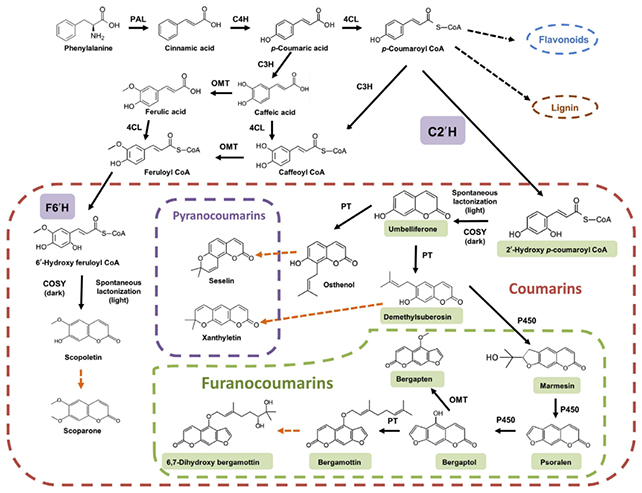We know grapefruit has numerous health benefits, but its ingredients can also mess with regular meds, enhancing them to dangerous levels or weakening them so they're no longer effective – a problem that new research might have a solution for.
It's primarily the compounds called furanocoumarins inside grapefruit that interfere with prescription drugs (more than 100 of them, at the last count), which is why people on these meds are often advised to cut out certain fruits from their diet.
But what if that wasn't a concern?
A team from The Volcani Center in Israel decided to look for the genes behind furanocoumarins in the citrus fruits, grapefruit and pomelo. They were able to find a multi-gene cluster in the 2-oxoglutarate-dependent dioxygenase (2OGD) family that was responsible for producing the defensive plant compounds.
Knowing this information opens up the possibility of genetically engineering grapefruits and pomelos without furanocoumarins. Other citrus fruits, including oranges and mandarins, do not naturally produce these compounds.
"This research helps us to understand why fruit of certain citrus species produce furanocoumarins and demonstrates how breeders and researchers could develop furanocoumarin-free citrus varieties," says plant scientist Yoram Eyal, from The Volcani Center.

The study team used a combination of techniques to identify the 2OGD cluster, including DNA and RNA analysis, gene comparisons, and cross-breeding between fruits to highlight variations in furanocoumarin production.
Different genes in the 2OGD cluster were shown to be responsible for its production in different parts of the plant (such as the leaves and the roots), or under different conditions (such as when tissues are under attack). The integrity of one gene in particular, Cg2g000710, seems to be crucial in cooking up furanocoumarins.
What's more, a specific sequence of DNA called the 655-base insertion sequence seems to be disrupting the activity of the Cg2g000710 gene in citrus fruits without furanocoumarins. This may be due to the evolution of these plants over time, the researchers suggest.
"Analysis of genomic and transcriptome sequences of Cg2g000710 and its orthologues demonstrated an intact reading frame in the 'Hudson' grapefruit leaf transcriptome and in the pomelo genome," write the researchers. "In stark contrast, the transcript was entirely absent from the 'Ora' mandarin transcriptome… "
This is some high-level biology, but the key takeaway is that furanocoumarin production has been mapped in citrus fruits for the first time. The researchers didn't attempt to produce furanocoumarin-free grapefruit, but we now have the knowledge and tools that make it possible.
That could help prevent some pretty severe consequences of fruit-drug interactions. Further research will be needed to investigate how these altered citrus fruits could be made – without drastically affecting their taste or introducing other harmful effects.
"Our work provides the basis for future marker-assisted or genome-editing-based breeding of citrus varieties which will be safe for consumption by a large and growing population of humans dependent on the use of prescription drugs," write the researchers.
The research has been published in New Phytologist.
